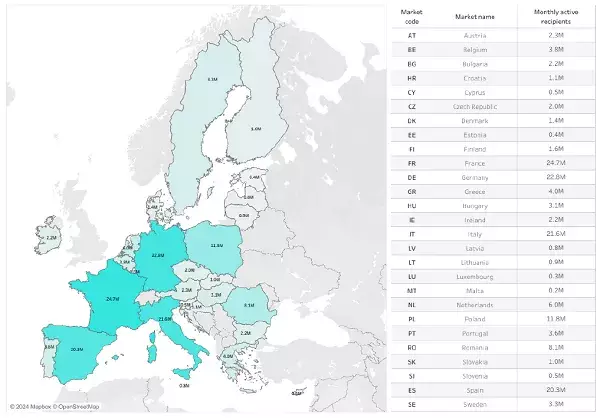TikTok has emerged as a dominant player in the social media landscape, particularly in Europe, where its user growth and content moderation strategies are under constant scrutiny. The recent Digital Services Act (DSA) report from TikTok offers insight into its operations across Europe for the first half of the year, shedding light on user statistics, content removals, and efforts to combat illegal activities. This article analyzes TikTok’s reported figures, emphasizing the implications these findings have on the platform’s trajectory and responsibilities.
The DSA report reveals a significant number of content removals by TikTok, totaling nearly 22.2 million pieces during the reporting period. A notable finding is that the category of “Sensitive & Mature Themes” was at the forefront, accounting for the largest volume of content taken down. This indicates TikTok’s prioritization of maintaining a safer environment for its younger audiences, which has been a persistent concern among parents, governments, and advocacy groups.
Interestingly, despite this large number, TikTok has witnessed a decrease in average monthly content removals from 4.3 million to 3.7 million over the year. This reduction could suggest that TikTok is successfully refining its content moderation processes or that users are being more cautious about what they share. Nonetheless, drawing definitive conclusions from one cycle of reporting remains complex. It raises questions about whether fewer removals indicate a healthier platform or suggest that harmful content is still slipping through undetected.
In terms of illegal activities reported by users, TikTok highlights “Illegal Hate Speech” as the leading concern. It was followed closely by issues relating to “Privacy Violations” and the sharing of “Non-Consensual Intimate Images.” This focus underscores the platform’s struggle to maintain user safety while promoting freedom of expression. The uncomfortable reality is that TikTok, like many social media platforms, is an arena where both positive interaction and harmful behavior coexist.
Moreover, TikTok has reacted to these challenges, banning over 5.3 million accounts in the same reporting period. This drastic measure speaks volumes about the extent of impropriety on the platform. However, it also invites skepticism regarding the company’s ability to effectively filter out harmful users before they engage with the platform’s greater audience. The balance between accessibility and safety continues to be a contentious one for TikTok, which must critique its own strategies while navigating the nuances of digital community governance.
On the user growth front, TikTok boasts 150.5 million monthly active users in Europe, reflecting an increase of 8 million since the last report. This gradual rise of approximately 1.3 million new users each month may not seem exponential, yet it demonstrates a steady expansion within key markets like Germany, France, Italy, and Spain, each surpassing 20 million users. It is important to recognize that the social media milieu is heavily competitive, and while TikTok is growing, how it capitalizes on this growth will be pivotal in maintaining user interest amidst rivals like Instagram and Snapchat.
The broader context reveals that these four European countries are integral to TikTok’s strategy, aligning with its attempts to tailor content to diverse audiences. As TikTok continues to solidify its place in Europe, it should consider leveraging user feedback and regional cultural trends to attract even more users. The ability to connect with local content needs is crucial for sustaining growth in a fast-evolving digital landscape.
As TikTok navigates the complexities of user safety, content moderation, and growth in Europe, its DSA report reveals both achievements and areas requiring urgent attention. The decrease in content removals coupled with rising user statistics might tempt optimism; however, the persistent issues of illegal content and privacy violations present ongoing challenges.
For advertisers and content creators eyeing the European market, understanding these dynamics will facilitate targeted strategies that resonate with TikTok’s audience while adhering to the platform’s standards of safety and integrity. Ultimately, TikTok’s ongoing journey in Europe will serve as a vital case study of how social media platforms can grow responsibly in a rapidly changing digital-first world.


Leave a Reply
You must be logged in to post a comment.